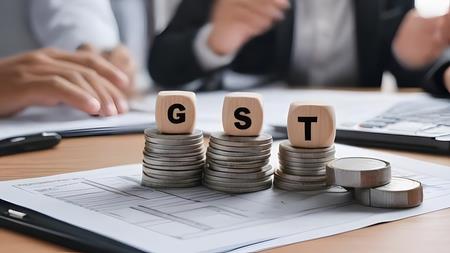Science
Strong GST Collections Challenge Fears of Revenue Declines

Gross Goods and Services Tax (GST) collections in India have shown notable strength, contradicting widespread fears of significant revenue declines. According to a report from the State Bank of India (SBI), the collections for October 25, 2023, which represent returns filed in September, reached Rs 1.96 lakh crore, a rise of 4.6 percent compared to the previous year. This positive trend counters concerns expressed by various states regarding a potential drop in GST revenue following the rationalisation process.
Analysis of GST Trends
The latest data reveals that while gross domestic collections increased by 2 percent year-on-year, the revenue from imports saw an even more substantial rise of 12.8 percent. Additionally, the number of e-way bills generated in September hit a record high of 13.2 crore, indicating robust commercial activity.
The report highlights a significant growth in refund processes as well. Total refunds for October amounted to Rs 26,934 crore, marking an impressive 39.6 percent increase year-on-year. This improvement in refund processing is viewed as a sign of enhanced ease in business operations, contributing to overall market confidence.
Dr. Soumya Kanti Ghosh, Group Chief Economic Advisor at SBI, stated, “Assuming that states experience similar gains and losses post rationalisation as observed in October, we project GST revenue for FY26. This indicates that most states appear to be net gainers following GST rationalisation.”
Projected Revenue Implications
Despite the Union government’s estimate of a potential revenue foregone due to GST rate rationalisation being around Rs 48,000 crore, various research agencies had forecasted far more severe losses. Some predictions suggested losses could reach an astonishing Rs 10 lakh crore.
However, historical analysis suggests a different narrative. Previous rounds of GST rate adjustments, specifically those in July 2018 and October 2019, indicate that while there may be short-term revenue fluctuations, the long-term outlook tends to favour stronger collections. The report from SBI underscores this perspective, stating that rationalisation typically leads to a temporary adjustment phase that is followed by enhanced revenue inflows.
This current data suggests that the fears surrounding GST collections may be overstated, reinforcing the notion that effective tax policy can sustain and even enhance revenue generation. As states prepare for the fiscal year ahead, the evidence points toward a more optimistic revenue outlook post-rationalisation.
-

 Lifestyle3 months ago
Lifestyle3 months agoHumanism Camp Engages 250 Youths in Summer Fest 2025
-

 Sports3 months ago
Sports3 months agoDe Minaur Triumphs at Washington Open After Thrilling Comeback
-

 Business4 months ago
Business4 months agoKenvue Dismisses CEO Thibaut Mongon as Strategic Review Advances
-

 Sports4 months ago
Sports4 months agoTupou and Daugunu Join First Nations Squad for Lions Clash
-

 Top Stories4 months ago
Top Stories4 months agoColombian Senator Miguel Uribe Shows Signs of Recovery After Attack
-

 World4 months ago
World4 months agoASEAN Gears Up for Historic Joint Meeting of Foreign and Economic Ministers
-

 Business4 months ago
Business4 months agoOil Prices Surge Following New EU Sanctions on Russia
-

 Health3 months ago
Health3 months agoNew Study Challenges Assumptions About Aging and Inflammation
-

 Entertainment3 months ago
Entertainment3 months agoDetaşe-Sabah Violin Ensemble Captivates at Gabala Music Festival
-

 Entertainment3 months ago
Entertainment3 months agoBaku Metro Extends Hours for Justin Timberlake Concert
-

 Business4 months ago
Business4 months agoU.S. House Approves Stablecoin Bill, Sends to Trump for Signature
-

 Top Stories4 months ago
Top Stories4 months agoRethinking Singapore’s F&B Regulations Amid Business Closures









